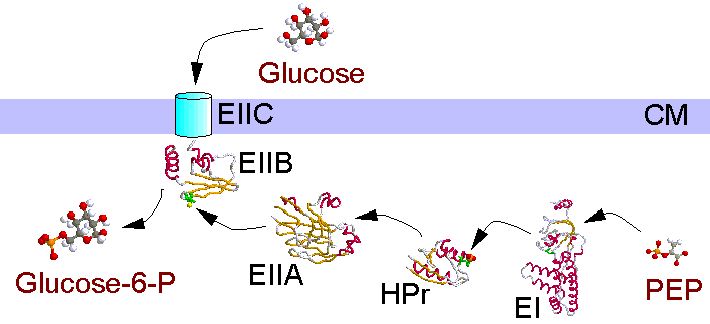The purpose of the bacterial phosphotransferase system is the specific uptake of sugars into the cells, the sugars are transported uphill a concentration gradient with concomitant phosphorylation. Phosphate donor is the 'energy rich' phosphoenolpyruvate (PEP).The phosphate is transferred via the soluble (and non sugar specific) enzymes EI and HPr to the enzyme complex EII. EII is made up of the components A, B and C, which according to sugar specificity and bacterium involved may be domains of composite proteins. Component/domain C is the permease and anchored to the cytoplasmic membrane. In the glucose PTS of E. coli EIIA is a soluble protein, EIIB/C is membrane bound.
The phosphate group cleaved off the PEP is bound covalently to the proteins to histidines or cysteines. The amount of phosphorylation of the enzymes influences other regulatory mechanisms in the cells (catabolite repression, chemotaxis).
Enzyme I is phosphorylated by PEP autocatalytically. The whole protein (64 kD) resisted crystallization till now, but the amino terminal part including the active histidine is accessible to structural analysis. The model shown here includes amino acids 2 - 249.


